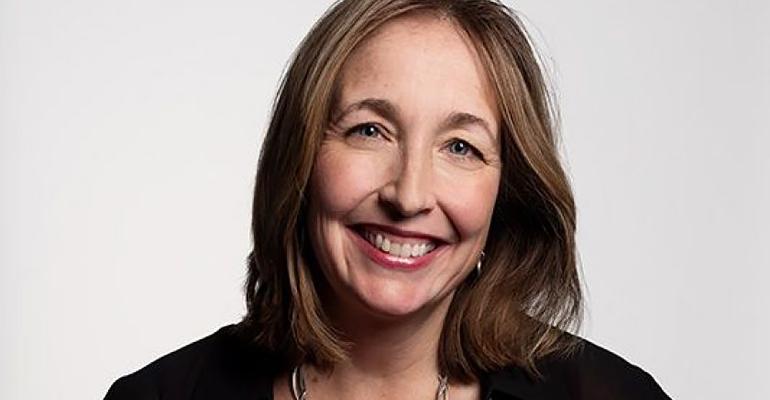When Tricia Rothschild left Morningstar last year, she said she tried to stay out of wealth management and technology, but it didn’t take long for the industry to draw her back. By April, Rothschild was consulting with Apex Clearing, which turned into a formal role as President at the firm earlier this month. WealthManagement.com spoke with Rothschild about her plans for Apex, the opportunities she sees for scaling its business and how she will continue growing the firm.
WealthManagement.com: What are you setting out to do at Apex? What are your goals for your tenure at the firm?
Tricia Rothschild: I kind of think of it in two categories: strength and speed. The strength piece of it is more internally focused to the organization. It's about building for scale and ensuring—in addition to the really strong foundation and talent that already exist in the organization—that there's an operating model that will support growth. You want strengths in your architecture if you're planning to grow.
The second half would be speed, or growth. It’s more commercially oriented. It’s responding to needs that we see in the market for bringing a more modern, digital-first or tech-forward custody and clearing service into parts of the market that perhaps have not had those, had that opportunity or perhaps didn't prioritize that previously.
That could be a convergence play around banks or credit unions, looking to have a more digital experience for their customers and bringing previously siloed experiences together.
It could be a more like a traditional advisory firm, either an RIA or an independent broker-dealer who understands that there is a better customer experience waiting for them if they can support that through a more digital custody and clearing experience.
It could be thinking differently about business models and how the custody and clearing part of the value chain integrates with the rest of the experience. Apex isn't just for disruptors; it’s actually for the rest of us.
WM: Former Apex clients, like Robinhood or Wealthfront, eventually went on to build their own clearing services. How should the wealth management industry view that? Is it appropriate to think of Apex as the starting point for fintechs like that, but that the fintech will eventually move on or build out its own systems?
TR: That's not the norm. Like any business that you run, the business owner needs to be providing value to the client. How Apex delivers value in a consistent way or in a continually-evolving way to customers is clearly an important part of the answer to your question.
Turn and burn is not the way custody and clearing work—and it’s not beneficial for anybody. I want to refute the thesis of the question, which is that the experience of Robinhood is “normal” or “expected.”
WM: When you were at Morningstar, the firm was building out better data aggregation and making deeper moves into financial planning. How did those initiatives prepare you for what you're going to be doing with Apex?
TR: The motivator for both the examples you gave and the motivator for me personally at Apex is understanding the transformation that's happening in wealth management and the delivery of advice.
At Apex, most investors don't necessarily think a lot about custody and clearing, however it’s no less important. If it isn't working or it doesn't work well, you cannot meet your goals. It’s a critical component. It's just not necessarily obvious to the investor.
Totally digital delivery of robo advice has led to an awakening in the industry, but in real life many people do want and need a coach of some sort.
You can see that as you look at the robo advisors adding human components to their model. As a custody and clearing firm, being able to support the digitization and the elimination of some of the inefficient parts of the process—and really putting more emphasis on the customers’ needs front and center—is changing. The industry is becoming more customer centric as opposed to product centric.
It's a better environment for investors. That's where I feel Apex has a real advantage. It's exciting to be able to support it.
WM: You have a trend of customer centric becoming more important than product centric, yet most customers don't think of custody as something other than a thing existing in the background. How do you make those two dynamics fit together?
TR: I'm not honestly sure that the customer needs to know a whole lot more, as long as the system works, which would include the market participants who are doing their job, and it is continuing to innovate.
It's kind of like when you open your refrigerator door: you don't necessarily need to know how or why the food is chilled, but you sure do know if it isn't right. If there's a way to make a more energy efficient refrigerator, the people who are behind the scenes and developing that technology really have to invest in it.
The industry, whether it's a disruptor or an incumbent, needs to continue to invest.
WM: Apex was formed in 2012. How do you prepare to work at a company that didn't exist when you started working at Morningstar?
TR: That's the thing that's really appealing for me. There's just a lot of potential for a firm like Apex and its size is perfect for me, given the experiences I've had building and scaling a couple of different business lines at Morningstar, many of which were global. Figuring out how to work in an organization where you want to get leverage from existing services, but also want to be focused and fast and scrappy and entrepreneurial. How do you bring both worlds into an organization as it starts to mature? I think that's just really fun for me personally. It’s a really fun place to be.
This interview has been edited and condensed.





